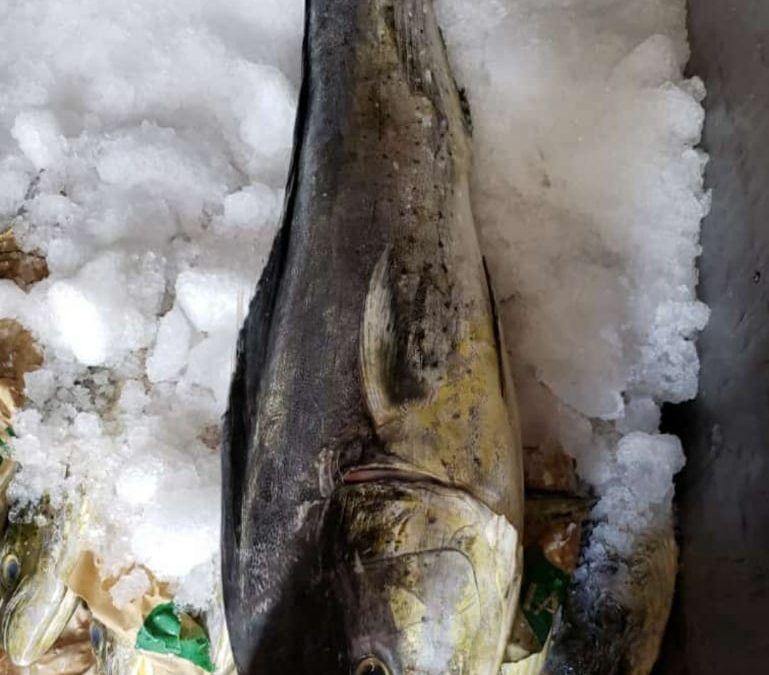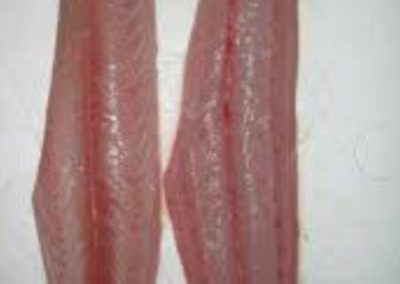Health experts agree that the benefits of fish as a protein source rise above. But with some fish, especially large fish, customers have to weigh those benefits against risks like mercury. The common understanding is that the larger the ocean fish, the more likely it is to be contaminated. Pregnant women and young children are advised to avoid several large varieties, including Swordfish, King mackerel, Tilefish, Bigeye tuna and Marlin because of potentially harmful amounts of mercury.
There is one exception, however: Mahi Mahi.
Make sure your Bay Area seafood market customers know that while these fish are huge, they are also low in mercury! And that’s just the beginning of their superpowers. Fresh Mahi Mahi from BONI SEAFoods INC is also an excellent source of several vitamins, amino acids, and fish oil. Combined, Mahi Mahi is a delicious serving of succulent protein that helps the body reduce the risk of heart disease and cancer, fight inflammation, and maintain healthy functions. It can even delay symptoms of aging.
Here’s a breakdown of all the wonderful qualities of this fish. It’s no wonder the meaning behind the Polynesian name “Mahi Mahi” is literally “strong strong.”
Lean Protein: A mere six ounces of Mahi Mahi provides 31.5 grams of protein and just 1.2 grams of fat. That makes it very lean, but still chock full of essential amino acids and enzymes.
Vitamin B: Mahi Mahi is an excellent source of vitamins B-3, B-5, B-6 and B-12. B-3 helps in heart health by controlling cholesterol levels. It also maintains healthy skin, supports brain function and can prevent join problems like arthritis. B-5 helps make blood cells and converts food into energy. B-6 helps your brain and nerves in operations like mood control and hormone regulation. It’s also been proven to aid in liver function. B-12 helps keep nerve and blood cells healthy, and even assists in making DNA.
Potassium: This special mineral lowers blood pressure, which combats heart disease. It also supports heart and muscle function.
Selenium: This nutrient is a powerful antioxidant. Selenium not only supports healthy heart function, but it helps fight inflammation and boosts immune function. A serving of Mahi Mahi boasts 62 micrograms, more than 100% of your recommended daily amount.
Omega-3 fatty acids: This lipid is something we could all use more of. It’s a healthy fat that benefits the heart instead of harming it, and also cuts down on inflammation. There aren’t a whole lot of sources of omega-3 fatty acids, but fish, including Mahi Mahi, offer a prime supply.
Coloration
Coloration of Mahi Mahi is quite dramatic with golden hues on the sides, irregular blotches of metallic blue and greens on the back and sides, and white and yellow on the underside. This fish is very colorful underwater, catching light and reflecting a wide range of brilliant colors. Freshly caught individuals change coloration very quickly, fading to a uniform silvery color. Small individuals and juveniles have well-defined alternating light and dark vertical bars on the sides of body that continue onto the dorsal and anal fins. Juvenile Mahi Mahi ( dolphinfish) have white-tipped caudal fins and black pelvic fins while juvenile pompano dolphinfish have white-edged caudal fins and no pigment on the pelvic fins.
Size, Age, and Growth
The Mahi Mahi is a large fish, known to reach a maximum of 6 feet (2 m) in length, but more commonly to lengths of 3 feet (1 m). This fish commonly weighs 30 pounds (14 kg) with a maximum of more than 65 pounds (30 kg). The record for Florida waters is 77 pounds, 12 ounces (35.2 kg) and the world record is 87 pounds (39.5 kg). Dolphinfish that school together range in size from 1-20 pounds (.5-9 kg) while larger individuals live alone or in pairs. Dolphinfish grow rapidly throughout their life, with a maximum life span of 4 years.



